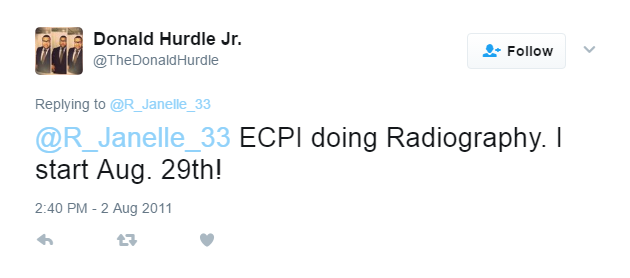What is a Radiograph Used For?
A radiograph, the image produced by an x-ray, can have many purposes in the medical field. It could detect disease, monitor healing, or explore the human body for potential problems. As technology in the industry becomes more sophisticated, the need for trained medical radiography technologists becomes more apparent. Let’s explore the uses of radiographs as well as what you have to do in order to work with them.
Radiography and Its Application
Despite the increasing use of technologies, radiography has managed to hold its ground in the diagnosis of disorders affecting internal organs. This procedure has also benefited from technology. The resulting image can be in digital form hence saving on storage space and makes it easy to share. To perform this procedure, a radiograph uses a beam of X-rays that it transmits through a body during scanning. The X-ray generator is a part of the radiograph that is responsible for producing the rays.
Thanks to this procedure, a Radiologic Technologist can view internal bone fractures or detect diseases associated with the abdominal area. All these are possible based on how the procedure works. When under a beam of X-rays, materials absorb them in varying degrees. As such, high density materials like bones would absorb large amounts of the rays compared to the soft tissue.
As mentioned, radiography has proved helpful in detecting diseases affecting internal organs. In particular, the technologists can study and diagnose patients with lung diseases like lung cancer. Mammography, which is a type of radiography, is useful in screening for cancer of the breast. As technology improved over the years, Radiologic Technicians now use digital X-rays instead of using photographic films that were large and difficult to store.
Need for High Level Training
It is worth noting that exposure to X-rays could increase the risk of cancer. Based on that information, professionals in this field have to practice caution while performing their duties. The bottom line is that the technologists have to undergo proper and high level training for safety reasons before they can start practicing. Clearly, high quality training by a certified institution is beneficial for individuals aiming to be the best in the field of radiography.
For instance, the training and externship experience goes a long way in ensuring these technologists to know how to properly using radiographs. The process involves all the steps from preparing patients for the procedure and specifying the appropriate amount of X-rays for each case. That is the case given the fact that each radiography procedure requires varying amounts of rays based on the tissue for scanning and the desired contrast of the resulting image.
After receiving proper training that would ensure minimal or no mistakes when performing radiography procedures, can move to the next step of certification. To start with, most states require Radiologic Technologists to have a practicing license or certification. In addition, employers also prefer hiring certified technologists regardless of whether the state in question states so or not. Notably, the certification process precedes high level training.
Entry into the Field Of Radiography
Just like in other career paths, your level of experience determines your employment chances. Based on that idea, certified technologists could improve their employment chances by targeting industries that have recorded the highest number of such professionals. According to the Bureau of Labor Statistics, hospitals operating as private, local, or state institutions recorded a 59% employment share for Radiologic Technologists in 2014. At the same time, you could aim to work for experienced technologists as you earn your experience.
You could also venture into radiography as a career option based on its job outlook in the coming years. Once again the BLS has projected the employment rate for these professionals to grow 9% between the year 2014 and 2024. The increase could be due to the population growing older and diseases like cancer and Alzheimer’s disease would become more prevalent than now.
As you plan to pursue radiography, you should have certain qualities and skills that fall into mental, physical, or hazard awareness categories. Such qualities are not only important during the training period, but also during practice. Examples of the qualities include:
- Technical skills
- Detail oriented
- Great interpersonal skills
- Physical stamina
- Math skills
- Great vision and hearing abilities
Are you interested in the field of radiography? If you think you have what it takes to become a certified technologist, consider ECPI University for your Associate of Applied Science in Medical Radiography. Start today by making contact with a friendly admissions counselor.
It could be the Best Decision You Ever Make!
DISCLAIMER – ECPI University makes no claim, warranty, or guarantee as to actual employability or earning potential to current, past or future students or graduates of any educational program we offer. The ECPI University website is published for informational purposes only. Every effort is made to ensure the accuracy of information contained on the ECPI.edu domain; however, no warranty of accuracy is made. No contractual rights, either expressed or implied, are created by its content.
Gainful Employment Information – Radiography - Associate’s
For more information about ECPI University or any of our programs click here: http://www.ecpi.edu/ or http://ow.ly/Ca1ya.




